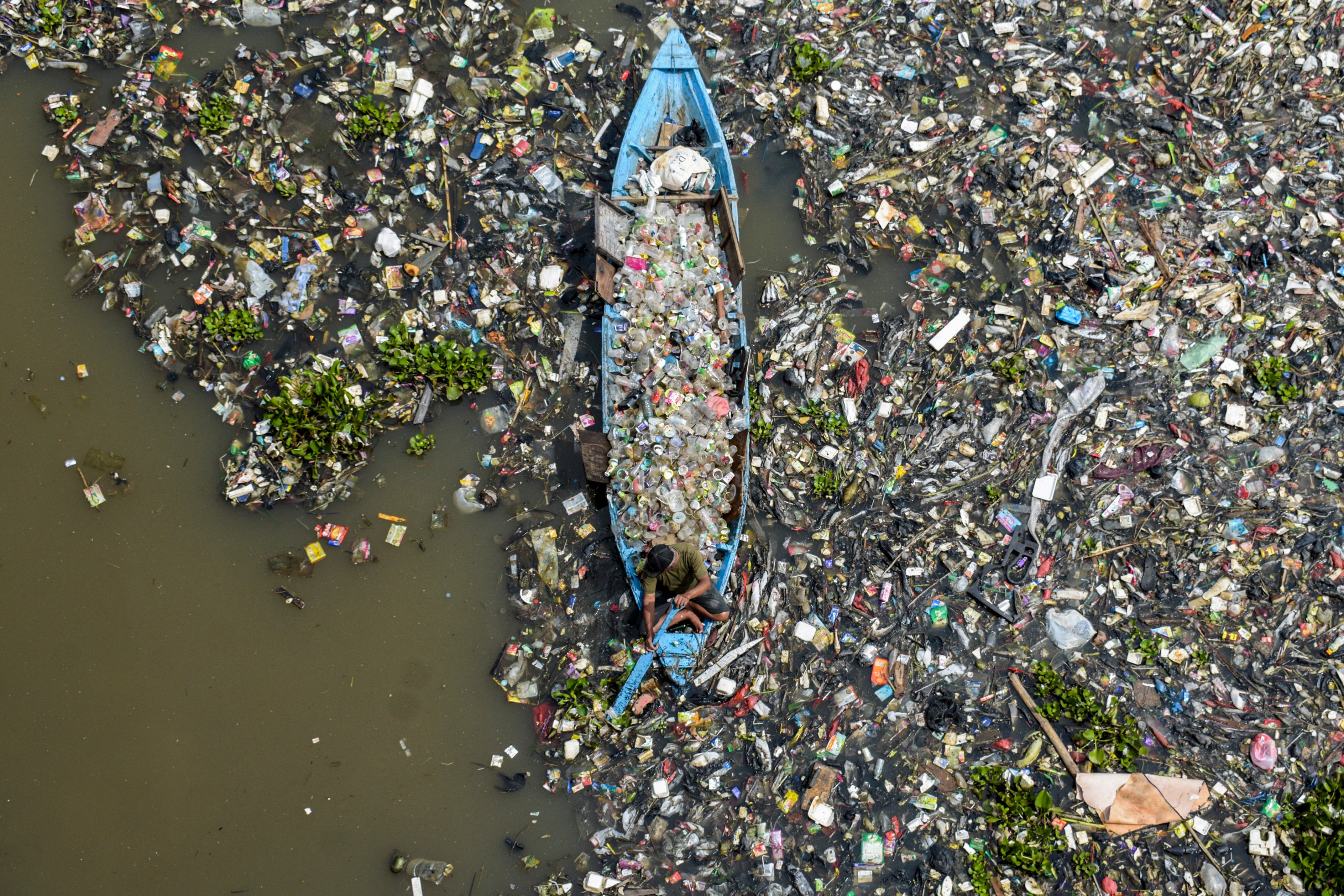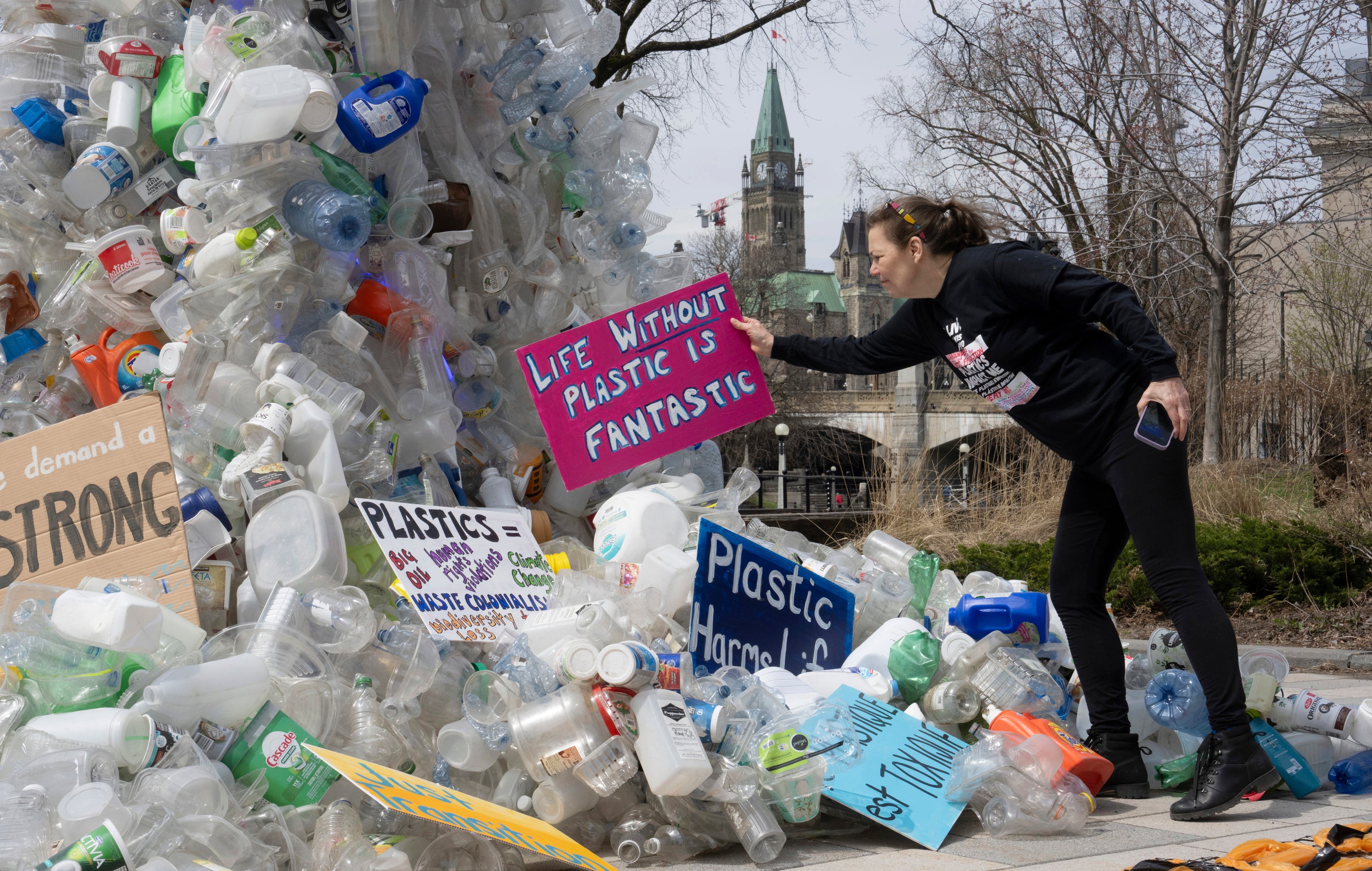Scientists discover plastic-eating fungi that could help clean up world’s oceans
Bacteria and fungi are evolving to eat plastic but their impact will likely be limited to specific applications, researchers say

Your support helps us to tell the story
From reproductive rights to climate change to Big Tech, The Independent is on the ground when the story is developing. Whether it's investigating the financials of Elon Musk's pro-Trump PAC or producing our latest documentary, 'The A Word', which shines a light on the American women fighting for reproductive rights, we know how important it is to parse out the facts from the messaging.
At such a critical moment in US history, we need reporters on the ground. Your donation allows us to keep sending journalists to speak to both sides of the story.
The Independent is trusted by Americans across the entire political spectrum. And unlike many other quality news outlets, we choose not to lock Americans out of our reporting and analysis with paywalls. We believe quality journalism should be available to everyone, paid for by those who can afford it.
Your support makes all the difference.Scientists in Germany have identified a type of fungi that is capable of breaking down synthetic plastics, offering a potential new weapon in the global fight against plastic pollution.
A team at the Leibniz Institute of Freshwater Ecology and Inland Fisheries in Berlin found that certain microfungi can survive exclusively on plastics, degrading them into simpler forms.
While this is a promising breakthrough, especially when it comes to tackling oceanic plastic pollution, experts cautioned that it is not a silver bullet.
Researchers observed that microfungi in Lake Stechlin in northeastern Germany can thrive on synthetic polymers without any other carbon source.
“The most surprising finding of our work is that our fungi could exclusively grow on some of the synthetic polymers and even form biomass,” Hans-Peter Grossart, the lead researcher, told Reuters.
This ability to utilise plastic as their sole food source allows the Stechlin fungi to degrade plastic more efficiently compared to other organisms that might need additional nutrients or carbon sources.
Researchers said the fungi’s ability to break down plastic may have evolved in response to the overwhelming presence of the synthetic material in their environment.

These fungi are particularly effective at breaking down polyurethane, a common material used in construction foam, among other products.
Four of the 18 fungal strains studied by the Leibniz Institute team are particularly “hungry”, which means they can efficiently utilise plastics, especially polyurethane, Reuters reported.
They are less efficient in breaking down polyethylene, commonly used in plastic bags, and microplastics from tyre abrasion, which are laden with heavy metal additives that hinder degradation.
Can fungi solve the plastic crisis?
While the discovery of plastic-eating fungi is a step forward, it is unlikely to solve the plastic pollution problem on its own.
Experts said the most effective way to tackle plastic pollution is to reduce the amount of material entering the environment.

The fungi’s enzyme activity, responsible for breaking down plastic, is heavily dependent on external factors like temperature and nutrient availability. This makes them more suitable for controlled environments like sewage treatment plants rather than natural settings.
They can be particularly helpful in areas where traditional recycling methods are less effective.
Mr Grossart acknowledged these limitations, noting that while these fungi can be used in waste management facilities, they are not a comprehensive solution to the growing plastic waste problem.
“We should definitely try to release as little plastic as possible into the environment. Plastic is made from fossil carbon, and if the mushrooms break it down, it’s no different from us burning oil or gas and releasing CO2 into the atmosphere,” he said.
Plastic-degrading organisms have been the subject of scientific interest for years now. So far, over 400 species of fungi and bacteria have been found to degrade plastic.
Last year, a study published in the Journal of Hazardous Materials by researchers at the Royal Botanic Gardens, Kew, London, said they had identified 184 fungal and 55 bacterial strains capable of breaking down polycaprolactone, a biodegradable polyester commonly used in the production of polyurethanes.
A well-known example of a plastic-eating bacterium is Ideonella sakaiensis, discovered in Japan in 2016, which can digest polyethylene terephthalate, commonly used in plastic bottles, which are hard to recycle by traditional means.

Apart from plastic-eating organisms, scientists have been looking to develop “self-digesting plastic” by incorporating plastic-eating bacteria spores into polyurethane, a commonly used but difficult-to-recycle material.
While these organisms offer hope, their application remains limited by the conditions needed for them to thrive and the slow pace at which they degrade plastics.
Prof Steve Fletcher, director of the Revolution Plastics Institute at the University of Portsmouth, told the BBC earlier this year that the most effective way of tackling pollution is to agree on legally binding global cuts in plastic production.
“Care must be taken with potential solutions of this sort, which could give the impression that we should worry less about plastic pollution because any plastic leaking into the environment will quickly, and ideally safely, degrade. Yet, for the vast majority of plastics, this is not the case,” he said.

Negotiations are ongoing for the first global plastics treaty, with the final phase set to be held in South Korea at the end of this year. The treaty can create a roadmap for how the world can deal with rising mountains of plastic waste that has seeped into everything from the deepest oceans to our food supplies and internal organs.
The application of plastic-eating organisms remains at an early stage, with much of the research still focused on understanding how these processes work and how they can be scaled up.
The global production of plastic has skyrocketed from 1.7 million tonnes in 1950 to 400 million tonnes in 2022, according to Statista. And despite increased efforts, only nine per cent of plastic waste is recycled worldwide, reports the UN.
Join our commenting forum
Join thought-provoking conversations, follow other Independent readers and see their replies
40Comments